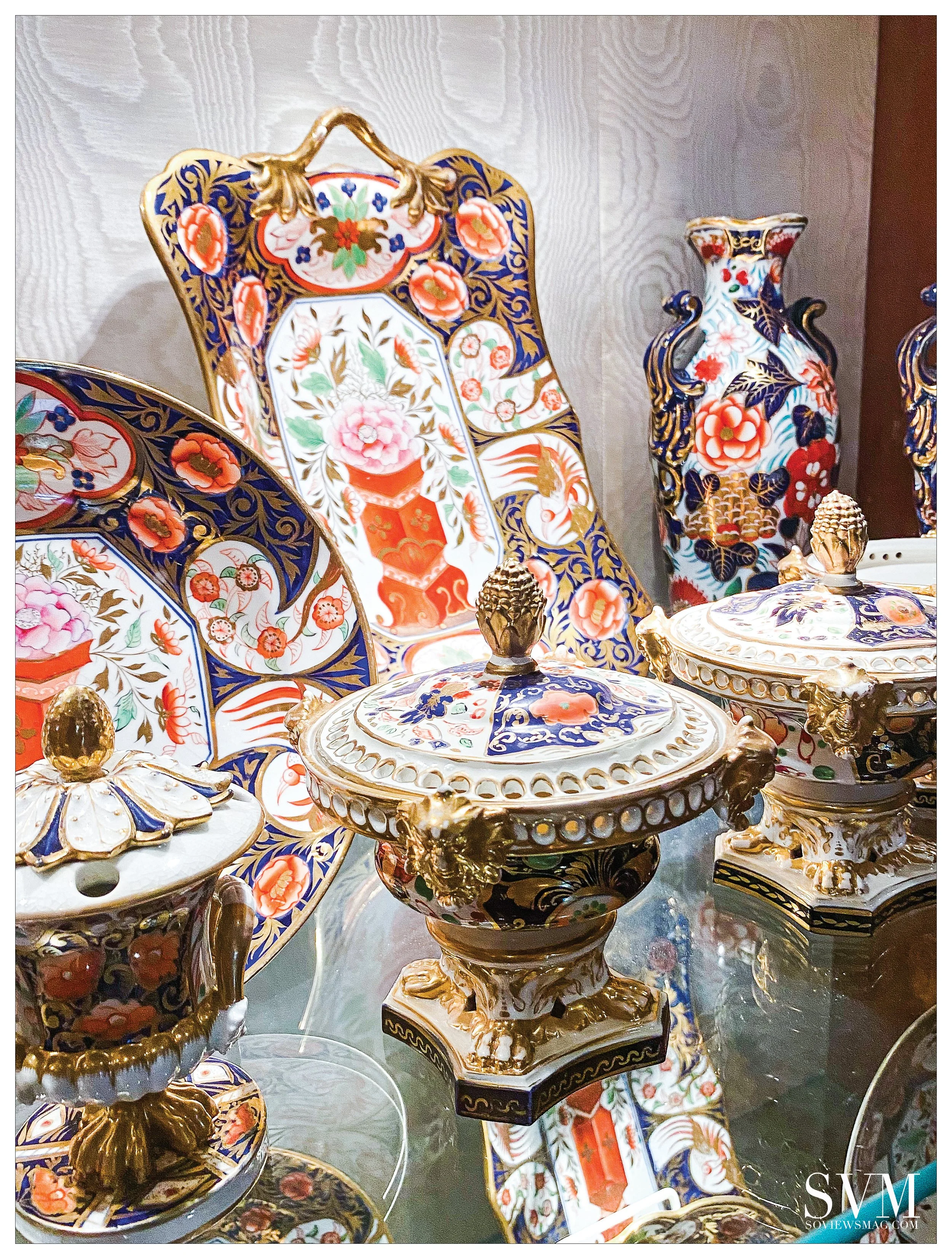IMARI PORCELAIN
Imari porcelain is a term for a colored style of antique Japanese porcelain, named after the seaport Imari on the island Kyushu, Saga, in Japan, from where the porcelain first was shipped to the West starting at the beginning of the 17th century.
Photography by R. Caligaris
Exquisite, elegant, and of the highest quality, Imari porcelain is highly respected in Japanese culture and is one of the pride and hallmarks of Japan. The two true masters in the antique Imari trade are the Japanese and the Chinese artisans.
It’s no secret that Imari porcelain is highly valued by art experts and lovers all over the world. When you purchase antique Imari porcelain, you are guaranteed unparalleled quality and originality. Each is a stunning piece, rich in history and high in cultural value, created by true masters of the art.
When during the 2nd half of the 17th century due to the downfall of the Ming dynasty, the Dutch East India Company could no longer export much porcelain from China, they turned to Japan as an alternative porcelain manufacturer. Of the shipments of Japanese porcelain which were made to the Netherlands some were aka-e or "red painted", which borne the name "Imari" porcelain in part referring to any porcelain shipped out from the Imari port but mostly in the minds of people referring to this red painted decoration. This "Imari" style was very successful in Europe.
Imari porcelain can be Chinese or European in origin, but was first created in Japan. In 1616, the town of Arita became Japan's porcelain production center because it was near Izumiyama, a quarry rich in kaolin clay. The wares were then shipped to the West from the port of Imari, hence the name. The earliest Imari pieces had simple, hand-painted designs in blue against white grounds and were made to be tea bowls, dinner plates, and rice bowls.
By the 1630s, ceramic makers were introducing a wider variety of colors into their pieces. The designs also became more intricate, featuring images of cranes, fish, beautiful women, flowers and gnarled tree branches. These were the most popular images in Japanese textiles at the time. Pieces were under-glazed in blue first, with the blue used to delineate borders and backdrops. Afterward, other colors such as rust red, green, and gold were added and fired at a lower temperature. Imari's iconic color combination proved to be very popular in Europe.
Japan imposed a self-isolation policy in the mid-seventeenth century. The only other nation that could continue trading with them was Holland, so Dutch traders would import Japanese goods (including Imari) and trade them to the rest of Europe. Imari potters began to produce pieces specifically for European tastes. Dutch artists would suggest some ideas for scenes, which might depict geishas, hunting scenes with dogs, or Dutch men and women. Imari wares produced before 1750 are called “Old Imari” and command high prices because of their scarcity.
English factories such as Royal Crown Derby, Minton, and Worcester produced their own versions of Imari. Other European factories included Chantilly in France, Meissen in Germany, and Holland's Delft factories. Chinese potteries also began to release high-quality Imari pieces for export, which flooded the market and drove up prices for scarcer Japanese Imari.
The isolation period ended in the mid-nineteenth century. Now that Imari was more readily available again, its popularity exploded. The designs produced during this period have vivid tomato reds and deep cobalt blues. The most prized pieces among Western collectors are the Imari that were produced by the Koransha kiln from the late nineteenth century to the early twentieth century. These are often densely decorated with bold and stylized motifs, including bamboo, koi, and irises.
Royal Crown Derby, which produces English Imari to this day, is known for using intricate borders and an abundance of gold detail. French Imari is designed in a similar way. Meissen Imari from Germany are less cluttered than either Derby or Japanese Imari, and feature comparatively simple designs. You can identify Chinese Imari by its brighter white and more purple-toned blue. The red over-glaze is also thinner and closer to orange than in Japanese pieces. Chinese Imari is generally more finely potted than Japanese, with a very even glaze.
As you begin to research different types of Imari, you may be drawn to one factory's particular style. You can usually identify which factory produced a piece of porcelain by its mark on the underside. However, don't be surprised when you find antique Imari without any mark at all.
Before 1890, imports to the US were not required to be marked by country of origin. Those that were marked usually listed the name of the importer or manufacturer. Japanese Imari is especially difficult to date. Marks on these pieces can vary from personal signatures, the name of the customer, or the exporter and importer. Sometimes even pieces within the same set can be marked differently.
Asian antiques have come back in style and can serve as statement pieces in a variety of homes – from English to French to American. This fine porcelain can add color to your walls in lieu of a painting. Consider also using Imari pieces for table presentation. In addition, a small collection of Imari can mix beautifully with leather-bound books in a den.
Southern Views Magazine- All Rights Reserved ©





